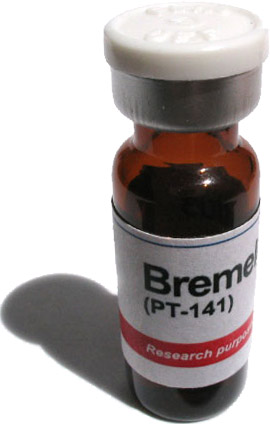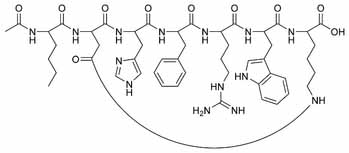SCIENTISTS are on a multi-billion-pound quest to find a drug that will kindle female sexual desire. More than 20 drugs are being developed to meet the needs of women seeking to overcome the effects of long working hours, family pressures or emotional problems. Race on to develop women’s yes-yes-yes pill
Sarah-Kate Templeton,
Medical CorrespondentWhile drugs for male sexual dysfunction, such as Viagra, work by chemical stimulation of the sexual organs, the treatments being devised for women act on receptors in the brain. Trials of Viagra on women, by the manufacturer Pfizer, found that it had little effect on a woman’s libido.
Stimulating the parts of the brain responsible for female sexual excitement is a more difficult challenge for the pharmaceutical firms.
Palatin Technologies, an American company, is carrying out trials of a drug called Bremelanotide, the first in a new class of drugs containing a synthetic form of the hormone melanocortin.
Within 30 minutes the drug activates the brain’s melanocortin receptors — the nerves involved in sexual arousal — thereby increasing feelings of sexual interest.
Several other companies, including Vectura, a British firm, are preparing drugs based on the chemical apomorphine, which works by mimicking dopamine, the brain’s “signalling” chemical. It acts on the hypothalamus, a part of the brain known to control physical arousal. The market for drugs dealing with male sexual problems is worth about £1.5 billion a year. Female demand is also predicted to be strong, particularly from exhausted career women.
Phillip Hodson, a relationship counsellor and author of How to Make Great Love to a Woman, said: “The life of a lot of modern women is exhausting and we are looking for a quick-fix solution. The alternative would be to change the way we live our lives.”
Hodson added: “When women have sexual problems it is linked to their emotional relationships.
“If someone tells a woman she is beautiful at breakfast she will feel different for the rest of the day. If her partner says he is really looking forward to seeing her that will make her feel good. A lot of that romance is missing.”
A World Health Organisation (WHO) committee has reviewed more than 40 trials of drugs to stimulate desire in women. Various testosterone treatments, including patches and gels are also being developed.
Procter & Gamble, the multinational products and services company, has created a testosterone patch called Intrinsa to boost female libido. The company suffered a setback, however, in December 2004 when the US Food and Drug Administration turned down its application for a licence because of concerns about the drug’s long-term safety in relation to breast cancer, heart disease and strokes.
The administration also raised concerns about the efficacy of the treatment. It observed that women wearing the patch had only one more satisfying sexual encounter a month than women in the control group using a placebo.
Dr Mike Wyllie, a member of the WHO committee and chief scientific officer at Plethora Solutions, a British pharmaceutical company, said: “There will be more than 20 drugs in the pipeline for female sexual dysfunction.
“The regulatory authorities are being cautious because the drug may be used not just by those who have an arousal disorder but those who have normal sexual function and want to experiment.”
HOME
PT-141
Nasal spray
Sensualism.com
Sexual Healing(?)
PT-141 plus Viagra
Palatin Technologies
Designer Aphrodisiacs
PT-141 Arouses Women
PT-141 increases female sexual desire
Reverse engineering the female orgasm
PT-141 (bremelanotide): the female Viagra?
New sex drugs: Palatin's PT-141 (bremelanotide)
info@bremelanotide.co

